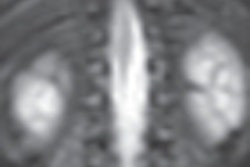The American College of Radiology (ACR) has released an updated set of appropriateness criteria on a troubling topic -- imaging procedures for children suspected of being abused. The guidelines were published in the February Journal of the American College of Radiology.
Prepared by an expert panel of pediatric radiologists, the criteria could influence tens of thousands of patients in the U.S. alone.
Statistics from 2008 -- the most current available from the U.S. Department of Health and Human Services (HHS) Administration for Children and Families -- are sobering. Sixteen percent of an estimated 772,000 children younger than 18 were victims of physical abuse in the U.S. An estimated 1,740 died from physical abuse or neglect.
Yet even these numbers may be low. In cases where the symptoms of nonaccidental injury mimic those of accidental injury, physical abuse to a child may be difficult to confirm, and information from the victim can be impossible or difficult to obtain. The majority of physically abused children are younger than 4 years of age, with a large percentage being infants, according to HHS statistics.
Radiologists are vital members of multidisciplinary medical teams that treat the suspected physically abused child. Especially with respect to infants, imaging exams can be used to differentiate characteristics of injuries occurring during childbirth, accidental injuries, and injuries from physical abuse. Radiologists have the responsibility to make a diagnosis, and if child abuse is suspected, communicate this opinion to their colleagues and to legal authorities.
Child abuse injuries can involve any site in the human body, noted the ACR Appropriateness Criteria Expert Panel on Pediatric Imaging, headed by Brian D. Coley, MD, assistant chief of radiology at Nationwide Children's Hospital and clinical professor of radiology and pediatrics at the Ohio State University College of Medicine, both in Columbus, OH (JACR, February 2011, Vol. 8:2, pp. 87-94).
The panel stated that 55% of physically abused children are diagnosed with fractures. Other common injuries include hollow viscus and solid organ injuries, superficial and deep soft-tissue injuries, and thermal injuries. Head trauma and head injuries are more frequent in infants and are the principal cause of death in children younger than 2 years.
The type and extent of imaging performed for a suspected child abuse victim depends on the child's age, signs, symptoms, and other social considerations, the panel advised. For example, fractures that are unsuspected or inconsistent with the child's age and medical history, fractures of differing ages, multiple fractures involving more than one skeletal area, and a combination of skeletal and nonskeletal injuries are red flags of potential abuse.
The appropriateness criteria recommend a radiographic skeletal survey as the primary imaging exam to detect fractures. A comprehensive skeletal survey is recommended for all suspected victims younger than 2 years, as well as for children 2 to 5 years based on the presence of other clinical findings. For older children, x-ray exams limited to the suspected injured body part may be appropriate.
A follow-up skeletal survey, with the exception of skull radiographs, should be repeated within two weeks, according to the panel. Bone scintigraphy should be performed only if a skeletal survey is negative but physicians strongly believe that physical abuse has occurred. The scan is particularly useful for detecting periosteal trauma and rib, spine, pelvic, and acromion fractures, the group wrote.
Regarding CT, the panel advised that children who present with signs and symptoms of an intracranial injury, or who have a skull fracture, should undergo a noncontrast head CT. This exam is always indicated if a patient has seizures, other neurologic signs, or a history of head trauma. If clinically warranted, an MRI exam should follow.
A CT scan of the head should be strongly considered for "high-risk" children with no overt signs of head injury who have rib fractures, multiple fractures, facial injuries, thoracic injuries, abdominopelvic injuries, and/or discrepant clinical histories. Infants up to 6 months of age should also have a head CT scan if they are considered high risk.
Children with nonaccidental abdominal trauma tend to be younger and are not taken to a hospital by a caretaker as rapidly as children who've had accidents, according to the panel. CT scans should be performed if merited by the clinical indications. CT of the abdomen and pelvis should always be performed with intravenous contrast unless the patient has an absolute contraindication to it.
In addition to providing numeric levels of appropriateness for each recommended exam, the ACR Appropriateness Criteria includes relative radiation levels based on effective dose. These comprehensive, updated guidelines will be of great benefit for the unfortunate children for whom they are intended, as well as for the medical staff who order and perform the exams.
By Cynthia E. Keen
AuntMinnie.com staff writer
February 11, 2011



















